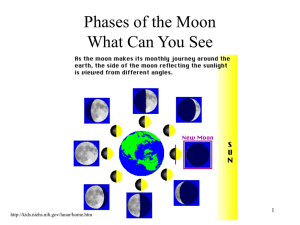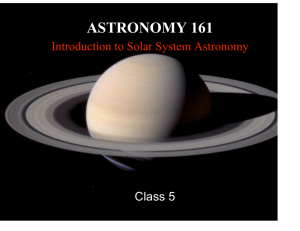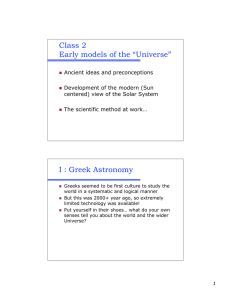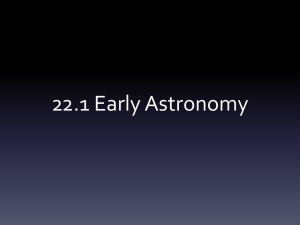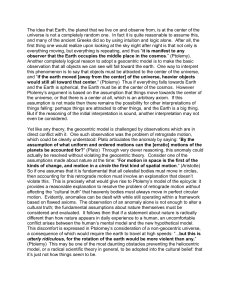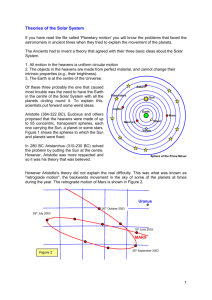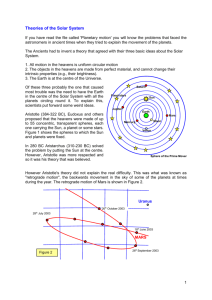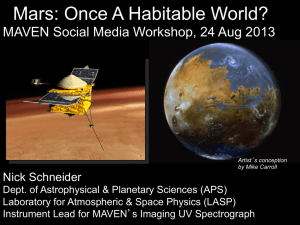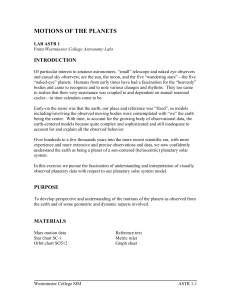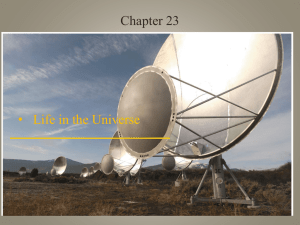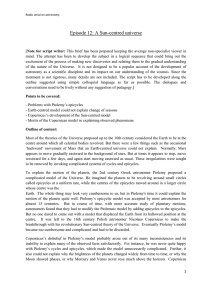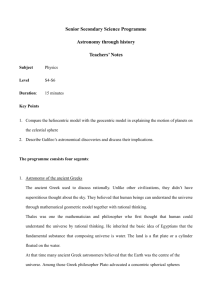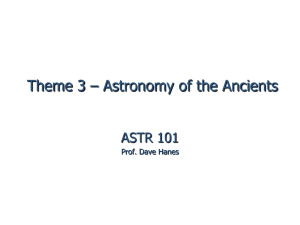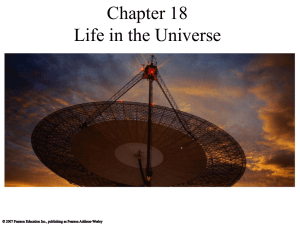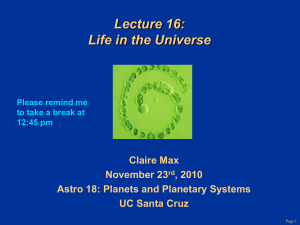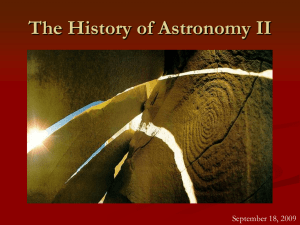Lesson 1-3 Worksheet (Key) Classical Astronomy
advertisement
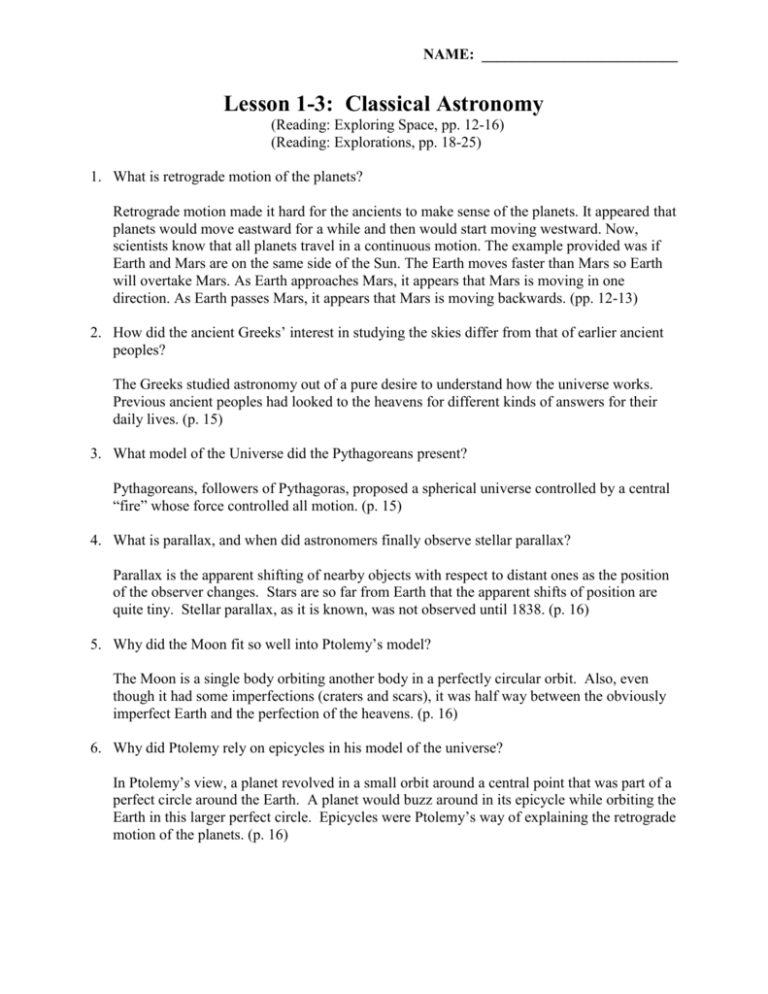
NAME: __________________________ Lesson 1-3: Classical Astronomy (Reading: Exploring Space, pp. 12-16) (Reading: Explorations, pp. 18-25) 1. What is retrograde motion of the planets? Retrograde motion made it hard for the ancients to make sense of the planets. It appeared that planets would move eastward for a while and then would start moving westward. Now, scientists know that all planets travel in a continuous motion. The example provided was if Earth and Mars are on the same side of the Sun. The Earth moves faster than Mars so Earth will overtake Mars. As Earth approaches Mars, it appears that Mars is moving in one direction. As Earth passes Mars, it appears that Mars is moving backwards. (pp. 12-13) 2. How did the ancient Greeks’ interest in studying the skies differ from that of earlier ancient peoples? The Greeks studied astronomy out of a pure desire to understand how the universe works. Previous ancient peoples had looked to the heavens for different kinds of answers for their daily lives. (p. 15) 3. What model of the Universe did the Pythagoreans present? Pythagoreans, followers of Pythagoras, proposed a spherical universe controlled by a central “fire” whose force controlled all motion. (p. 15) 4. What is parallax, and when did astronomers finally observe stellar parallax? Parallax is the apparent shifting of nearby objects with respect to distant ones as the position of the observer changes. Stars are so far from Earth that the apparent shifts of position are quite tiny. Stellar parallax, as it is known, was not observed until 1838. (p. 16) 5. Why did the Moon fit so well into Ptolemy’s model? The Moon is a single body orbiting another body in a perfectly circular orbit. Also, even though it had some imperfections (craters and scars), it was half way between the obviously imperfect Earth and the perfection of the heavens. (p. 16) 6. Why did Ptolemy rely on epicycles in his model of the universe? In Ptolemy’s view, a planet revolved in a small orbit around a central point that was part of a perfect circle around the Earth. A planet would buzz around in its epicycle while orbiting the Earth in this larger perfect circle. Epicycles were Ptolemy’s way of explaining the retrograde motion of the planets. (p. 16)
